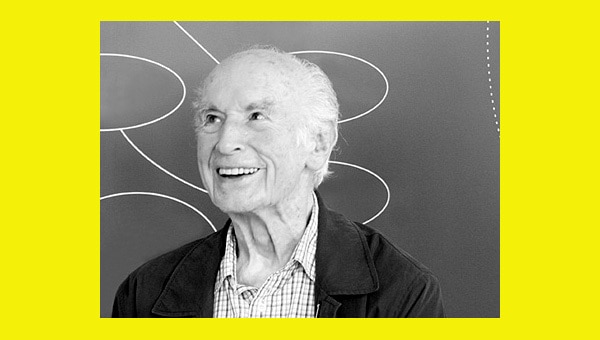
Albert Hofmann was the discoverer of LSD during World War II. It frightened him at first. It wasn’t made illegal in the U.S. until 1970. For more information, click this link. Wikipedia.
By: Phil Kohn. Dedicated to the memory of his father, GM3 Walter Kohn, U.S. Navy Armed Guard, USNR, and all men and women who have answered the country’s call in time of need. Phil can be contacted at ww2remembered@yahoo.com.
On April 16 the Royal Navy’s destroyer HMS Pakenham and two Italian destroyers are sunk in a naval engagement in the Sicilian Channel. At the laboratories of pharmaceuticals maker Sandoz, in Basel, Switzerland, biochemist Albert Hofmann accidentally swallows a dose of the newly developed drug lysergic acid diethylamide (LSD) being researched for possible medical and psychiatric uses and discovers its hallucinogenic qualities. Hofmann dutifully records the details of the drug’s psychedelic effects on him during the first-ever “LSD trip.”
The U.S. Eighth Army Air Force attacks aircraft factories in Bremen, Germany, from its bases in eastern England on April 17. It is one of its largest raids to date. Sixteen of the 115 American B-17 Flying Fortress bombers from the raid are lost. In the U.S., the War Manpower Commission issues an order that prevents some 27 million civilians from changing jobs. The manpower “freeze” remains in place until the war’s end. At a meeting in Salzburg, Austria, Adm. Miklós Horthy, Hungarian regent and head of state, informs Hitler that he will not accede to a personal request to hand over 800,000 Hungarian Jews to the Nazis. Horthy does, however, authorize 10,000 Jews to be deported to labor battalions.
Adm. Isoroku Yamamoto, the architect of the Japanese attack on Pearl Harbor and commander-in-chief of the Imperial Japanese Navy’s Combined Fleet, is killed on April 18 when his plane is shot down by American aircraft over South Bougainville after taking off from Rabaul. Japanese communications giving Yamamoto’s flight itinerary were intercepted and decoded by U.S. Navy cryptographers. Eighteen U.S. Army Air Force P-38 Lightning fighters take off from Guadalcanal and destroy the two bombers of the Yamamoto flight and their escorting Japanese fighters. An operation by 100 German transport aircraft to fly supplies to Axis forces in North Africa suffers a devastating attack by U.S. fighter planes. Over half the transport aircraft and 10 German fighters are shot down.
On April 19, 2,000 SS troops accompanied by tanks, enter the Warsaw Ghetto on the eve of Passover — to remove and deport the remaining 70,000 Jews living there. Up to 310,000 Jews have already been deported from the ghetto, and either executed or imprisoned in labor camps. To the shock of the Germans, they are resisted by some 1,500 Jewish fighters — armed initially with Molotov cocktails and 17 rifles — who have constructed a network of hiding places, and fight with small arms and improvised weapons. When his demand for their surrender is rejected, SS commander Jürgen Stroop orders the ghetto to be systematically burned, block by block, using flamethrowers and explosives. The Warsaw Ghetto Uprising, as it is called, will last almost a month. In North Africa, General Bernard Montgomery, eager for his Eighth Army to seal victory in Tunisia, launches an offensive toward Enfidha, which lies between Sousse and Tunis. After three days, the attack gains little ground and casualties are heavy. In Germany, fourteen German citizens who are members of the White Rose anti-Nazi resistance group are tried, convicted and immediately executed for crimes against the regime. The Japanese conclude “Operation I-Go.” During the nineteen days of the offensive, the Japanese destroy one destroyer, one corvette, one tanker, two cargo ships and 25 aircraft, but do not achieve the scale of success that was anticipated.
On April 20, the U.S. announces that three of the eight airmen captured when their planes crash-landed after the “Doolittle Raid” on Tokyo (18 April 1942) have been executed by the Japanese. In the Netherlands, 1,166 Jews are deported to Auschwitz.
Aberdeen, Scotland, on April 21 endures its worst bombing attack of the war by the Luftwaffe; 98 civilians and 27 servicemen are killed. In Tokyo, Adm. Mineichi Koga is named to succeed Adm. Isoroku Yamamoto as Commander-in-Chief of the Japanese Combined Fleet. Adolf Hitler quietly celebrates his 54th birthday at the Berghof, his home in the Bavarian Alps. Britain’s Royal Air Force marks the occasion by bombing Berlin and three other German cities.
The British First and Eighth Armies, the U.S. II Corps and Free French forces on April 22 begin an offensive designed to destroy the Axis forces in Tunisia. Axis and Allied troops clash in the Battle of Longstop Hill, the last natural barrier blocking the way to Tunis.



